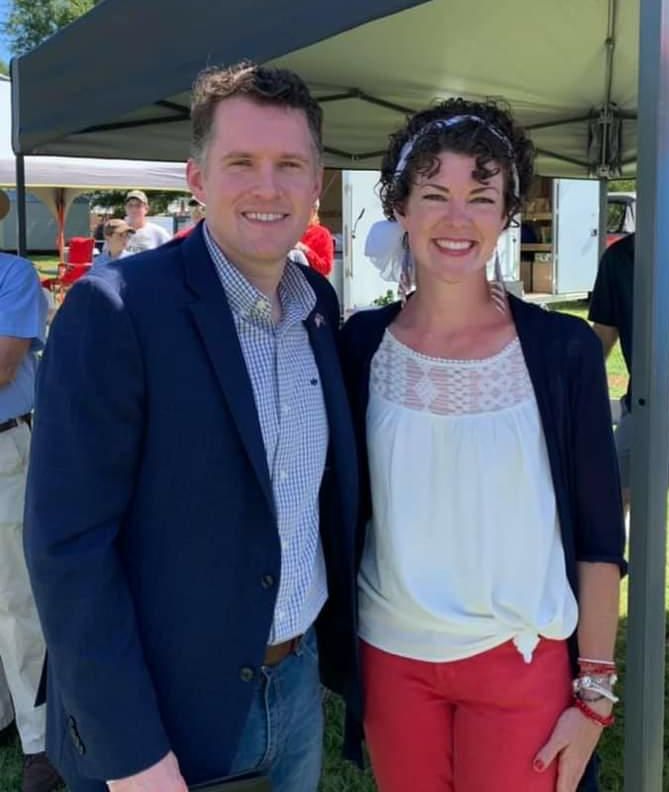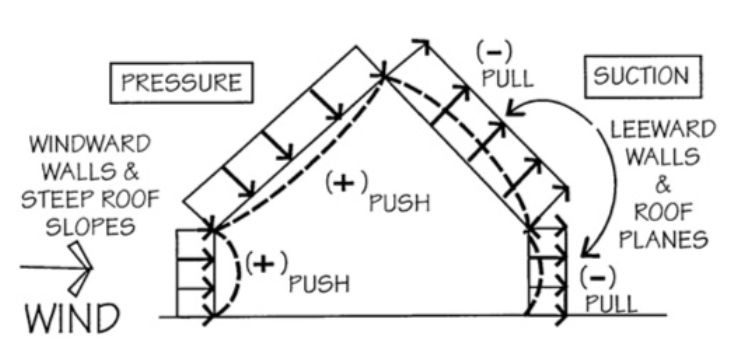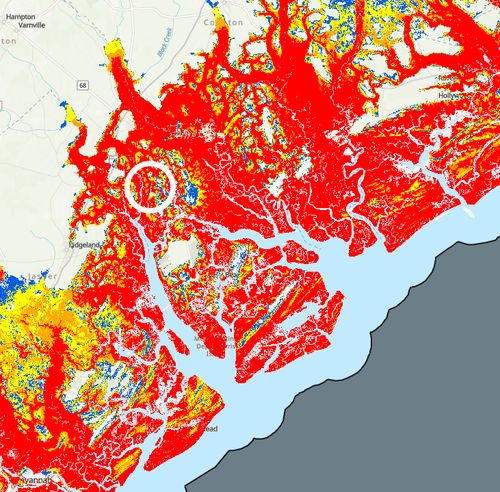02 Jun June 2023: Hurricane Season Begins June 1

Number 112, June 2023
Jessy has been elected Regent of the Walterboro Chapter of the DAR!

Jessy (third from the left) was elected Regent (Leader) of the Walterboro Chapter of the Daughters of the American Revolution (DAR) in May.
From the Desk  of Bill
of Bill
This month, I am writing about climate change. I am aware that some people will disagree with my assessment. What follows is my personal opinion and not one necessarily held by Willis Sinclair Homes. Keep in mind if something is not allowed to be discussed, it is propaganda and not science. Personally, I prefer science over propaganda.
If I were a corrupt politician (in many cases, a redundant term) and wanted to force some sort of legislation, perhaps I would follow Rahm Emanuel’s advice: “You never let a serious crisis go to waste. And what I mean by that is an opportunity to do things that you think you could not do before.”
It should not be just any serious crisis, however. Some crises can spin out of control.
For example the crisis at our Southern Border seems to be spinning out of control with all of the illegal aliens, terrorists and drugs coming into our country. That crisis might be best ignored.
The crisis between Russia and the Ukraine is another crisis that is probably best ignored (remember, I am thinking along the lines of a hypothetical corrupt politician) because it could spin out of control and touch off a nuclear war.
The Taiwan/China conflict is yet another crisis that could spin out of control quickly. Not that one.
The “Trump colluded with the Russians” hoax crisis is coming unraveled, so that is best ignored also.
The faltering economy is yet another crisis that many politicians would like to ignore — it could get very serious very quickly.
What is needed is a “serious” crisis with a controllable downside to force legislation with little risk of things get out of hand. A corrupt politician would need a crisis where a disastrous outcome could be “scientifically” predicted, but in actuality have little chance of happening. A crisis like “climate change.” Is the climate changing? Always. No one challenges that. It is hot in the summer and cold in the winter.
What is not so obvious is if we are moving towards some sort of serious disaster because of man’s activities? If a corrupt (or ignorant) politician can show that disaster is coming, then perhaps people could be persuaded to give up some of their freedoms and make sacrifices to “save” the world. Perhaps.
Keep in mind that the input America supposedly has towards “climate change” is minuscule compared to that of other nations such as India and China. Why, then, don’t our climate alarmists lean on either of those nations? If they do, perhaps the “climate change” crisis might spin out of control. It might not be as safe to push around the Chinese Communist Party as it is to push around American taxpayers.
The fact that it is verboten to even discuss the possibility that climate change is not happening or not bad should raise all sorts of red flags for people. Remember propaganda is not allowed to be questioned, science can be questioned.
So, what evidence is there that things could spin out of control on the climate front? Enter the computer model. The computer model is simply an (supposed) educated guess of what is going to happen. To be accurate, it has to take into account all (or at least as many as possible) variables. By adjusting the inputs, you can get any output you like – even terrible ones that “prove” the earth is either freezing or burning.
Keep in mind many things in nature are cyclical: day follows night, summer follows winter, tides rise and fall, Sun spot frequency increases and decreases on a roughly 12 year cycle and so on. Some summers are hotter than other summers. There are even long term cycles such as the “little ice age” that happened several hundred years ago. Today, Greenland is 80% covered with ice, but back in Erik the Red’s day (a little over 1000 years ago), sheep and potatoes flourished in Greenland. That is probably why icy Greenland is called Greenland and not Iceland. Clearly, there are also long term cycles in nature.
Those cycles have to be taken into account with any serious computer models (aka guesses). For a simple example, the length of visible light (daylight) will be 1 minute and 13 seconds longer on May 20 than on May 19 (when this is being written).
By using that fact, I know tomorrow will have 1 minute and 13 seconds more daylight than today, I could project based on that one fact, and ignoring all others, that in just one year (365 days), there will be 7 hours and 24 minutes more daylight (365 times 1 minute, 13 seconds) than today (for a total of 22 hours and 11 minutes of daylight). Clearly, that is nonsense because I did not consider the changes in the length of days depends on the day of the year. From the winter solstice to the summer solstice, the hours of daylight increase. From the summer solstice to the winter solstice, the hours of daylight decrease.
If computer models used to predict the weather are not all that accurate a few days out, do you really think they are accurate years out? Yesterday (May 18), the computer models said it would rain today. Today, the model says there is 0% chance of rain. Yet, we are suppose to trust the models years or decades in the future? How about all of the predictions a few years ago about the ice caps being melted by now?
There is also the question, how do you actually measure the temperature of the Earth? Some days are hotter than others in the same location. Different locations can vary in temperature dramatically. There is no forehead or mouth like on humans to measure body temperature. Keep in mind, alarmists are talking about a fraction of a degree of temperature change. NASA says 2020 was the hottest (whatever that means) year since 2016. What they don’t say is it must have been cooler in 2017, 2018 and 2019 than in 2016.
Another question that does not seem to get asked is “if the earth warms a degree or two, is that necessarily bad?” Growing seasons would be longer and that seems good. It seems to me that some non-biased research is sorely missing.
What about the “experts” that say there is a climate crisis?
What about the “experts” who had “proof” of the now known false Trump-Russian collusion?
What about the 51 Intelligence officials who signed the letter saying “Hunter Biden’s laptop” was likely Russian interference even though they knew the letter was very probably false?
What about the “experts” who have routinely predicted climate catastrophes in the recent past?
Remember Al Gore, the “science guru” who warned about all sorts of catastrophes in The Inconvenient Truth movie? Reportedly, he took a total of one natural science course at Harvard. His grade: D. I am not sure that a D in the only natural science course you took qualifies you as an climate “expert.”
Most climate change “experts” are paid directly or indirectly from government (taxpayer) funds. If the “experts” don’t “discover” what the government wants “discovered,” their chance of more research funding is gone. “Follow the money” is a good tactic to use when you are trying to sort out varying opinions.
Is the climate changing? Yes. Does man’s presence on the earth contribute to the change? Probably. Is man’s contribution significant? I doubt it.

On a much lighter note, a stray cat that “adopted” us has blessed us with five kittens. The grandchildren (and the adults) have enjoyed watching them.
Jane is posing with one of the kittens.
They are about a month old. Soon Cinnamon (mama cat) will be taking a trip to the vet…
Free kitten, anyone?

Mandy is another (part time) Willis Sinclair employee. She helps by doing house checks for absentee home owners and various other tasks.
Mandy is the second to youngest of our daughters (between Abbey and Jessy).
Mandy and Jessy are the owners of Twig, a boutique, and Colleton Coffee & Books – both in downtown Walterboro.
Mandy is pictured here with SC State Representative Stewart Jones from the upstate.
Hurricane Season Begins
Hurricane season 2023 begins June 1 and runs through November 30. (97% of the hurricanes occur during this window.) Although the chances of a hurricane strike here are not great, if one does, it can cause all sorts of damage.
Basically hurricanes bring wind and rain (or rising water). Either of those (or a combination of them) can cause problems.
Wind alone is usually not too much of a problem for homes built in the last few years under newer codes unless a major (category 3 – 5) hurricane strikes. With a major hurricane, all bets are off.
With a category 1 or 2 hurricane (74 – 110 mph winds) often it is what the wind brings with it — flying debris — tree limbs, lawn furniture and other items — that cause damage. That is why it is important to make sure any loose items on your property are properly secured.
Windows are particularly vulnerable to flying debris. Impact-resistant windows are built to not allow penetration if hit with flying debris, but that does not necessarily mean they won’t crack. Clearly, if you don’t have impact rated windows, they will need some sort of protection to prevent debris penetration (metal panels or plywood for example). Since you likely don’t want the covering on for the next six months, be sure to make arrangements for someone to install and remove the coverings for you if a storm approaches.

Strong winds can cause stress on homes. Most homes today are built to withstand the stresses and will not have major damage from storms.
Wind and flying debris is probably the biggest threat, but trees being toppled by strong winds could also be a problem. Trees can break and fall or they can be uprooted, especially if there has been a lot of rain and the ground is saturated. Other than keeping your trees well trimmed and healthy, there is not much you can do in this regard.
Storm surges are also a risk in low lying areas. Hurricanes in the northern hemisphere rotate in a counter-clockwise direction. That means if a hurricane strikes land south of you, its winds will be blowing inland at your location. It is the low pressure center and the wind direction that cause storm surges, so the surge is higher on the north side of the hurricane than on the south side typically (this assumes a hurricane moving in the westward direction and towards the east coast). The surge is made worse if you are near a bay which could act like a funnel.

Category 4 storm surge map from National Hurricane Center
This map shows the storm surge the national Hurricane Center projects if a category 4 (winds of 130 to 156 miles per hour) storms hits the coast. The circle is our location. Red indicates a storm surge of greater than 9 feet above ground; orange, 6 feet; yellow, 3 feet. Notice the storm surge is not just a coastal issue. In some areas it reaches west of I-95. Obviously, a category 5 hurricane would have higher surges; categories 1 – 3, lower.
Another wind issue from hurricanes is possible tornados they cause. A tornado is much smaller than a hurricane, but often the winds are stronger. There is also little warning if a tornado is approaching.
The National Hurricane Center has a short video showing how a home survives different categories of hurricanes. The video is near the bottom of this page:
https://www.nhc.noaa.gov/aboutsshws.php
Although hurricanes have a potential to do considerable damage, they don’t occur that often. South Carolina has had 31 hurricanes between 1851 and 2004 or roughly one every five years. Most have been Category 1 (19). Six of those 31 were major storms. None were category 5.
Are the number of hurricanes increasing because of “climate change” (or any other reason)? According to the hurricane Research Division of NOAA here are the numbers of hurricanes making landfall in the continental United States. Look closely at the numbers…
2000: none
2001: none
2002: 1
2003: 2
2004: 6
2005: 6
2006: none
2007: 1
2008: 3
2009: none
2010: none
2011: 1
2012: 2
2013: none
2014: 1
2015: none
2016: 2
2017: 3
2018: 2
2019: 2
2020: 6
2021: 2
2022: 1
(https://www.aoml.noaa.gov/hrd/hurdat/All_U.S._Hurricanes.html)
Since 2000, there have been some big years (2004, 2005 and 2020) each with 6 hurricanes. There were also seven years with no hurricanes hitting the continental United States at all. Since the average over the past 160 years is 2.1 hurricanes making landfall per year it would certainly seem that we have seen an increase over the past 23 years. Or have we? The chart above shows the average is actually 1.8 per year. In fact 2010-2019 had the lowest number of hurricanes since the 1970’s with only 7 other decades in the last 17 decades having less hurricanes. Of course the cost of these hurricanes continues to increase but that is due mainly to inflation and increased populations in affected areas. Climate alarmist would want you to think hurricanes are growing in intensity but from 2010-2022 the average category rating was 2.18. In 1950-1969 the average category rating was 2.42. What are we to believe?!
Regardless of the statistics, hurricanes are an ever-present threat and we should be prepared in any event. The key to hurricane preparation is to just do it. Be prepared. If your home is going to be vacant throughout much of hurricane season then you should consider doing your preparations early. This would mostly include putting loose objects indoors. If you don’t prepare early in the season then you might want to have someone lined up to close up your home, bring loose items inside and cover windows if/when needed. If you wait until a storm is bearing down on us, you will probably not be able to find anyone to help.
At Willis Sinclair Homes we maintain a list of homes that we prepare if a named storm is approaching. We are a small company, so the number of homes on the list is limited. If you would like to be on the list then just let us know. It’s on a first-come-first-serve basis, but we will do our best to fit you in!





No Comments